Below is MB’s submission to the House of Representatives Standing Committee on Tax and Revenue’s inquiry into Housing Affordability and Supply, which was uploaded yesterday.
The House of Representatives Standing Committee on Tax and Revenue is conducting an inquiry into Housing Affordability and Supply.
In launching this inquiry, committee chair Jason Falinski rallied an “urgent moral call for action by governments of all levels to restore the Australian dream for this generation and the ones that follow”.
Mr Falinski also claimed that “regulatory settings are directly responsible for the unresponsive nature of housing supply in Australia”. Therefore, this committee “will investigate the impact of tax and regulatory regimes on price, affordability, and supply of housing in Australia”.
Let’s get real and admit that this inquiry is a waste of time and taxpayer’s money.
Australia’s governments have run numerous housing affordability inquiries over decades, including but not limited to:
- Menzies Research Centre: Prime Ministerial Taskforce on Home Ownership 2003;
- The Productivity Commission’s First Home Ownership Report in 2004;
- A Good House is Hard to Find Report from the Senate Select Committee on Housing Affordability in Australia in 2008;
- Western Australia’s Affordable Housing Strategy 2010-2020;
- NHSC: State of Supply Reports (2008, 2010, 2011, 2012, 2013 onwards);
- COAG Review of Capital City Strategic Planning Systems Report 2011 and report on Housing Supply and Affordability Reform 2012;
- Senate Inquiry into Affordable Housing, 2014-2015; and
- Parliamentary Inquiry into Home Ownership 2015.
On top of these we have received many reports from think tanks like the Grattan Institute, the McKell Institute, AHURI, and others.
Thousands of work-hours and millions of dollars worth of salaries and consultants’ fees have been spent on these reports and absolutely nothing has come from them. So what is the point of wasting more taxpayer dollars? Nothing will come from this inquiry because our politicians don’t actually want more affordable housing, since this requires prices to fall.
Besides, if the Morrison Government truly believed there was an “urgent moral call for action by governments of all levels to restore the Australian dream for this generation and the ones that follow”, then it would have supported Labor’s negative gearing and capital gains tax reforms last election.
The sole focus on the supply-side – particularly red tape and taxes – suggests this inquiry is being driven by the property industry.
Any housing shortage pre-COVID was unambiguously caused by the federal government throwing open the immigration floodgates in 2005 (see next chart).
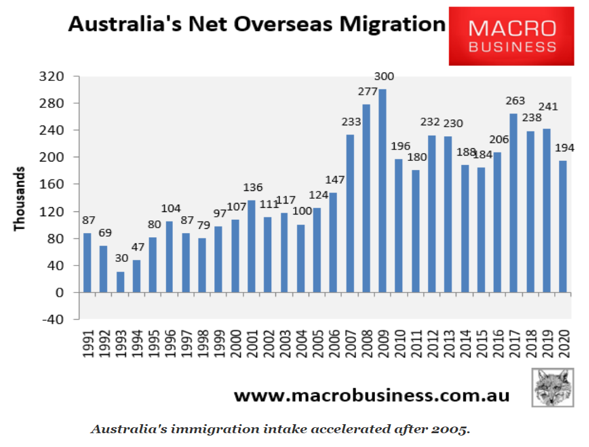
Australia’s net overseas migration (NOM) jumped from an average of 90,500 between 1991 and 2004 to an average of 219,000 between 2005 and 2019 – representing an annual average increase in immigration of 140%.
But now that immigration has collapsed thanks to COVID, Australia’s ‘housing shortage’ has miraculously disappeared (see next chart).
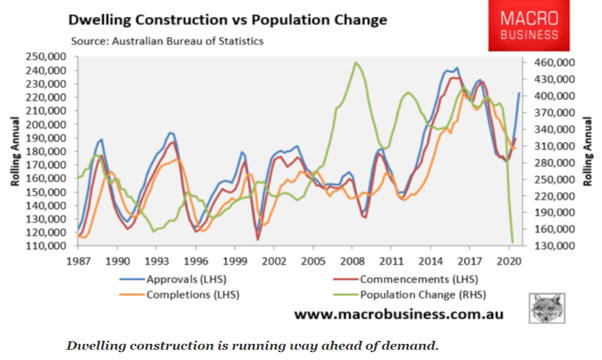
The National Housing Finance & Investment Corporation’s (NHFIC) first flagship report on housing supply and demand came to exactly the same conclusion.
NHFIC forecast that “cumulative new supply is expected to be around 93,000 higher than new demand by 2025”, thanks to the fall in immigration (see next chart).
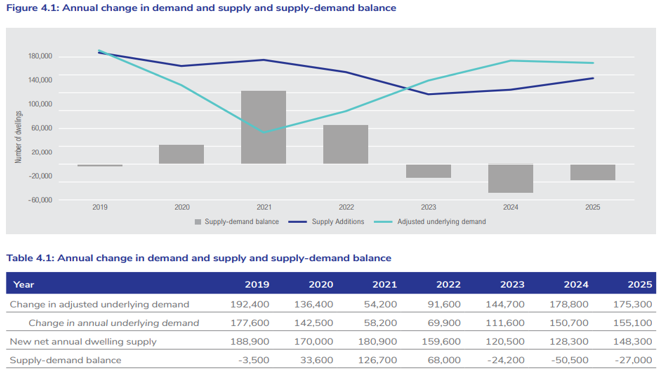
Moreover, the migrant epicentres of Greater Sydney and Greater Melbourne were forecast by NHFIC to experience the biggest surpluses of housing supply:
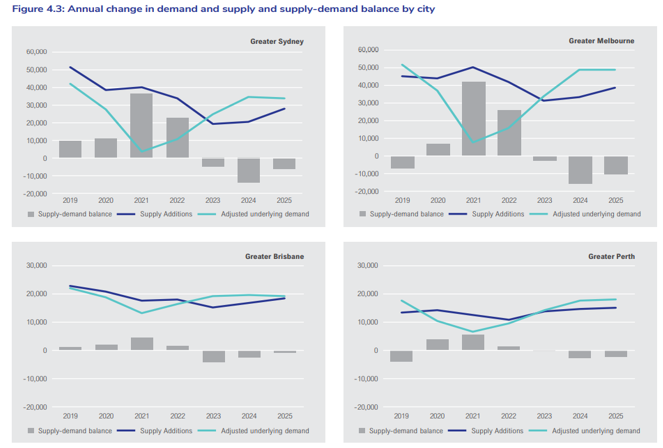
The lessons from the above are obvious:
- Australia’s housing supply ‘problem’ was caused by the massive increase in immigration-driven population growth from 2005.
- The first best solution to Australia’s housing supply problem is not to return immigration back to its extreme pre-COVID level.
Sadly, all sides of Australian politics are determined to restore ‘Big Australia’ immigration at the earliest opportunity, which will ensure that Australia’s housing supply problems return.
This is evidenced by the latest Intergenerational report, which projected permanently high NOM of 235,000 from 2025-26 onwards (see next chart).
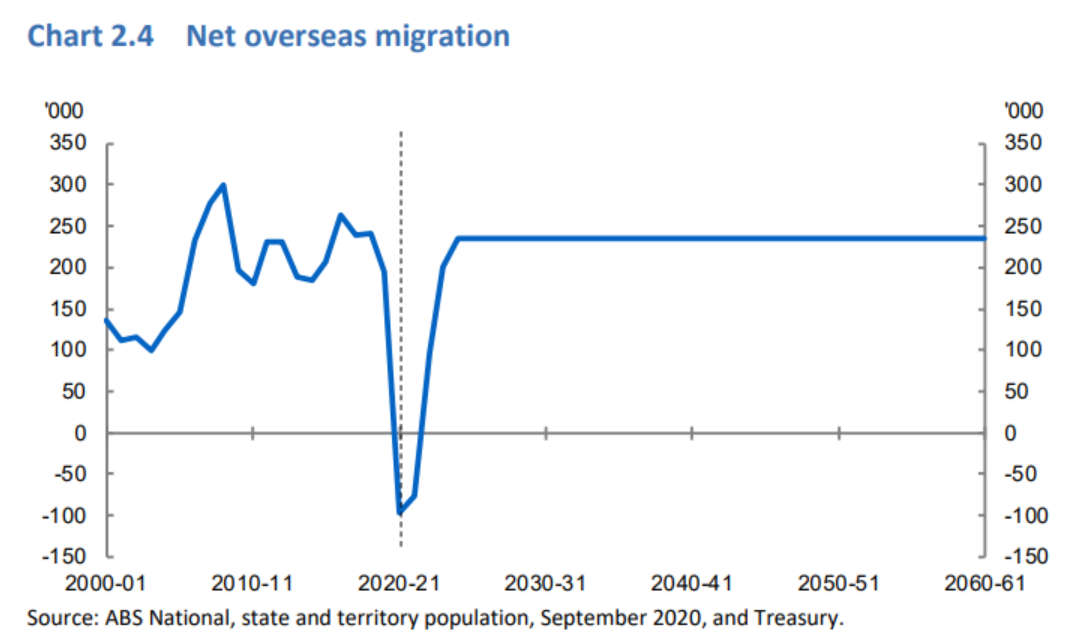
In summary, it is hard to take the inquiry’s supply arguments seriously in light of the above evidence. It is speaking with a forked tongue on the matter.
Any housing supply problem is first and foremost an excessive immigration problem.

